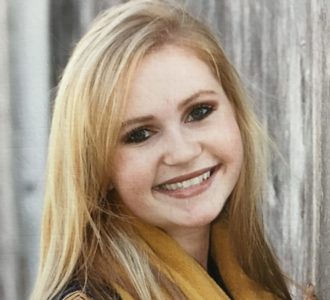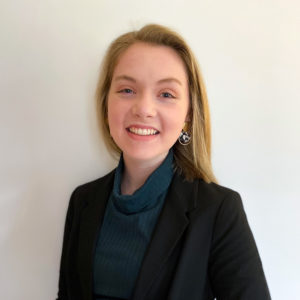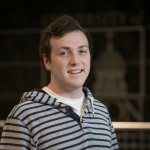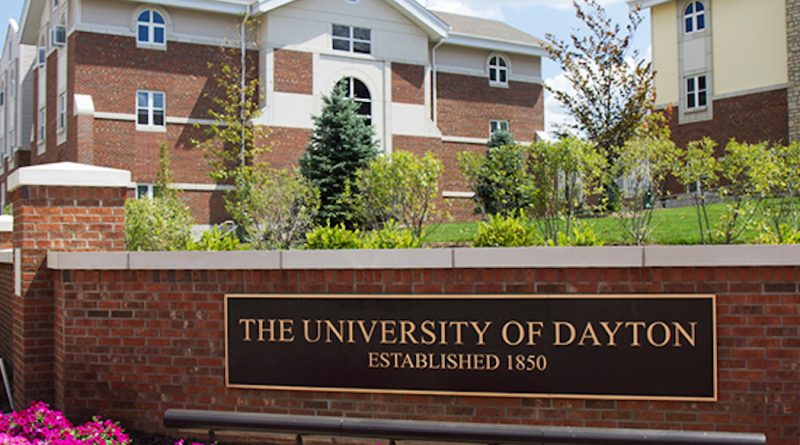UD alumni share their stories about life during the COVID-19 pandemic
University of Dayton alumni offer advice to fellow Flyers entering the workforce during the COVID-19 pandemic.


Franchesca Hackworth & Lauren Durham
Online Editor-in-Chief | Arts & Entertainment Editor
Flyer News interviewed a few of the University of Dayton’s alumni to see how fellow Flyers are handling the COVID-19 pandemic and how it has effected their careers.
Former members of Flyer News share their stories of change and offer guidance to those who will be entering the workforce during a climate of uncertainty.
John Bedell

John Bedell is a reporter and weekend evening anchor at WHIO-TV in Dayton. He started working for the No. 1 rated CBS affiliate 11 years ago and has continued to hone the skills he first learned when he joined Flyer Media in 2006.
Bedell is also the postgame host for exclusive broadcasts of Dayton Flyers basketball on 1290 and 95.7 WHIO Radio.
He is a 2010 graduate of the University of Dayton and attributes the hands-on experience with Flyer Media as part of what allowed him to hit the ground running when he began shaping his journalism career.
Bedell produced, edited, board-operated, and hosted his own radio show as well as called UD varsity sports on WUDR all four years that he was at UD.
As a junior, he began writing for Flyer News and served as the assistant sports editor his junior and senior year.
“That helped keep my AP style and print writing skills sharp. Plus I started taking more broadcasting classes and getting involved with Flyer TV junior year too,” he said.
Now 11 years into his career, Bedell is experiencing life during the COVID-19 pandemic just as every other Dayton Flyer out there.
Working as a journalist during the pandemic comes with its challenges. The in-person interaction with co-workers and interviewees is not the same as it used to be with most interviews and staff meetings virtual.
“Local TV news journalism is a very social profession,” Bedell said.
“TV and radio newsrooms are full of gregarious people, and newsrooms buzz with energy. We don’t get to experience our normal environments with needing to limit the number of people in the building, to socially distance and to isolate more often during the work day.”
Photographers and reporters typically ride in news vehicles together, but since the pandemic reporters and photographers each drive their own vehicle for liveshots during newscasts. The separation is another layer contributing to limited social interaction as well as limited efficiency as a reporter.
“I used that time to transcribe my interviews, write stories, make phone calls, send texts, gather facts and send emails. Now that I’m driving myself, that’s all kinds of multi-tasking time that’s lost. I’ve had to adjust and become more efficient with my time to make sure stories still meet deadline – deadlines haven’t gone away in the pandemic,” he said.
Despite the challenges that Bedell faces, he finds ways to look at some of the benefits regarding his career during the pandemic including more time to spend with family and workflow efficiencies.
“Just embrace the weird. Life is different these days, so is our chosen profession of journalism. Who knows what you might come up with that could better our industry and help others if you embrace that change, these challenges and innovate?” Bedell said when asked what advice he would give to other Flyers entering the workforce.
“We shine light in dark places, we hold power to account, we speak truth to power, we are the people’s auditor, we tell people’s stories so that other folks care about what’s happening so that we can work together to affect positive change.”
“It’s like the late, great “60 Minutes” correspondent, Mike Wallace once said, ‘It’s astonishing what you learn, and feel and see along the way. It’s why a reporter’s job is such a joy.’”
Michael Purves

Michael Purves graduated from the University of Dayton in 2013 and now works as a Digital Content Producer and Web Editor for WHIO-TV in Dayton, Ohio, writing about local, regional, and national breaking news.
He also spends time working as a traffic reporter on TV and radio, and with WHIO Radio’s UD basketball coverage as a post-game host.
While working at WHIO-TV, Purves has had unique and challenging experiences throughout the past couple of years.
“This region has seen so much destruction since 2019 and as a member of the local media its been hard to consistently tell the stories of people in the Miami Valley who experienced the Memorial Day tornadoes, saw a mass shooting unfold in a busy entertainment district, only now to have to deal with the uncertainties that life in a pandemic has brought.”
“You really see the people behind the headline or news story, because they are your neighbors, and to deal with a local news cycle dominated with tragedy and struggle for almost two full years has been exhausting. This has brought out a lot of good in people, but it has taken its toll.”
Purves works with a team of content writers to cover breaking news. With many people working from home during the pandemic communicating with each person when news breaks has had its challenges.
“In our newsroom we often talked about my team having a ‘one brain mentality’ meaning we all think as one,” Purves said.
Each person plays a significant role when news breaks. The team communicates so that everyone knows who is doing what, but with everyone in different locations communicating in the way that they used to was no longer an option.
Purves said his team embraced all of the changes and found new ways to move forward.
“I was told at the start of my career that the only thing you can expect is change. And after a crazy and somber 2019 news cycle in Dayton, all we wanted to see was a calm 2020. We got everything but calm and experienced one change after another.”
Despite the crazy news cycle that has ensued, Purves was able to handle everything thrown at him because of skills he developed early on working with Flyer Radio and Flyer TV.
“Graduating with four years of on-air and production experience certainly helped,” he said.
With his current position, Purves has embraced remote work and is thankful for the work relationships he developed prior to the pandemic.
Purves encourages other aspiring journalists to consistently work on writing and notes that a person’s ability to write conversationally is a skill that’s always in demand.
“It’s incredibly difficult to tell an aspiring journalist what to do or not do because the media landscape changes very quickly. So be ready for change and be ready to grab opportunities.”
Chris Moorman

Chris Moorman ‘13, a former sport editor and editor-in-chief of Flyer News, lives and works in Nashville, Tennessee.
As a current page editor and designer with Gannett, a member of the USA Today network, Moorman was already familiar with working from home. He has noticed an increase in communication between colleagues with the help of video conferencing.
“Even though the job itself didn’t change much, video conferencing became huge for a while,” Moorman said. “I think it was just because a lot of people, especially managers and those that were going into an office every day and couldn’t anymore, were seeking that human interaction.”
Moorman credits his time at Flyer News for teaching him how to be diligent and multitask – two skills that he uses every day.
“I always told people that they should involve themselves with Flyer News regardless of their background because it’s the one kind of institution in which you can interact with so many different people,” Moorman said. “You’ll be prepared for anything.”
Michael (Mickey) Shuey

Mickey Shuey ‘14, a former Flyer News sports writer and photographer, now has a very similar role at the Indianapolis Business Journal. He covers everything from real estate to sports, including Obi Toppin’s professional debut against the Indianapolis Pacers.
“I still tune into all of the Flyer games, men and women,” Shuey said.
According to Shuey, this past year has given him a full workload.
“Staying on top of the news has been a challenge just because there’s been so much going on between the pandemic and the social unrest in many cities,” Shuey said. “I was on the front lines of that, so covering has been the biggest challenge.”
He advises college students, especially those who are searching for employment opportunities, to be patient with themselves during this time of uncertainty.
“Make sure that you’re practicing self care because that can be very difficult, especially during a pandemic, especially when you have so much going on,” Shuey said.
Michael Crouchley

Former Flyer News sports editor, Michael Crouchley ‘20, began writing for The Seneca Journal in September. Located near Clemson, South Carolina, Crouchley covers high school and Clemson University sporting events in addition to doing page layouts for the section.
“It’s kind of weird covering sports when sports are in transit all of the time and postponed,” Crouchley said.
“Every press conference is over Zoom. Games have super reduced crowds and are socially distant.”
He is grateful for his time at Flyer News, noting that his job now closely resembles the role he played at the University of Dayton.
“I wouldn’t have gotten the job without it. I’m doing basically a lot of the same stuff that I did at Flyer News,” Crouchley said. “It’s kind of hard to understate how important it was.”
Crouchley noted that it was difficult to find a job after graduating in May. It has also been difficult to move and start over in a new city in the midst of the pandemic, but he recognizes that he is not alone.
“I would just say not to get discouraged. It’s a weird time to be looking for a job, so there are a lot of people going through the same stuff,” Crouchley said.
For more campus news like Flyer News on Facebook and follow us on Twitter (@FlyerNews) and Instagram (@flyernews)

